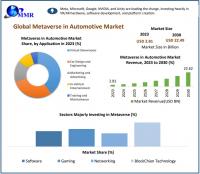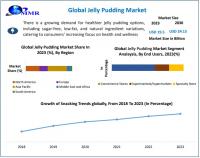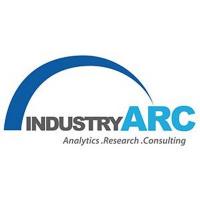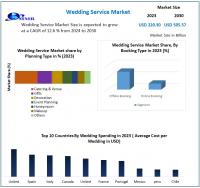COVID-19 Impact
The global COVID-19 epidemic had a significant influence on the worldwide armor materials industry in 2020. This was due to the strict constraints put in place to preserve social isolation and protracted lockdown. Manufacturers were unable to work at full capacity, resulting in a reduction in output capacity. Many countries import defensive equipment from other countries, such as body armor, helmets, and armor vehicles. However, amid the epidemic, the supply chain was entirely interrupted due to cross-border import restrictions. As a result, the Armor Material Market’s revenue has been affected. The armor materials manufacturer’s prime objective in overcoming this circumstance was to optimize their operations and formulate a strategy. However, with considerable economic upheaval, the armor materials market is predicted to rise in 2021-2022, as global defense investment grows.
Armor Materials Market Segment Analysis By Type
The metal and alloy segment held the largest share in the armor materials market in 2020 and is growing at a CAGR of 8.5% during 2021-2026.Metals such as high-density steel, aluminum, and titanium, along with their alloys, are used as armor materials for Infantry Fighting Vehicles, aerospace, and marine armor systems. They play a very significant role as alloys have good corrosion resistance, are more durable, and less susceptible to damage as compared to ceramics and composites. Aluminum alloy together with magnesium alloy seems to be promising metals to be used as ballistic armor as they are more efficient in terms of their mass and volume when compared to other metals. Due to the expanding application of metal and alloys in military body and vehicle armor, it is anticipated that the segment will be flourished during the forecast period.
Request for Sample Report @ https://www.industryarc.com/pdfdownload.php?id=15605
Report Price: $ 4500 (Single User License)
Armor Materials Market Segment Analysis By Application
The body armor segment held the largest share in the armor materials market in 2020 and is growing at a CAGR of 7.22% during 2021-2026. The armor materials such as metals, ceramics, composites, Para-aramid fibers, and more have enabled the production of lightweight body armor with improved ballistic protection. The commercially manufactured ceramics for armor include materials such as boron carbide, aluminum oxide, silicon carbide, titanium boride aluminum nitride, and Syndicate(synthetic diamond composite). Boron carbide composites are primarily used for ceramic plates to protect against smaller projectiles and are used in body armors. Silicon carbide is primarily used to protect against larger projectiles. Ceramic plates or trauma plates are used as inserts in soft ballistic vests. It is hard enough to ensure that a bullet or other weapon is deflected through it. According to Invest India, the demand for technical textiles was pegged at US$165 Billion in the year 2018 and is expected to grow up to US$220 Billion by 2025, at a CAGR of 4% from 2018-25. Thus, the increasing demand for technical textiles is enabling the growth of the armor materials market.
Armor Materials Market Segment Analysis By Geography
North America region held the largest share in the armor materials market in 2020 up to 34%, as the North American governments are heavily investing in their defense budget. The USA is one of the vital users of armor materials as the United States has one of the best military forces globally. According to the national defense budget estimate for 2021, the department of defense of the United States, the budget is around US$705.4 billion in the year 2021 and is estimated to touch US$768.3 billion by 2025. Due to the rise in the defense budget, the demand for military gear will rise, which will have a positive impact on the Body Armor Materials Market.
Armor Materials Market Drivers
Increasing Defense Investment and Rising Production of Military Vehicle Armor
The increased Global security including military and diplomatic measures in nations and international organizations such as the United Nations and NATO (North Atlantic Treaty Organization) take to ensure mutual safety and security. Chinas reported defense budget in 2021 amounted to US$714 billion in the fiscal year 2020 and is expected to increase to US$733 billion in the 2021 fiscal year. The total Defense Budget of India is 4,78,195.62 (US$65.2 billion) for the year 2021-22, which is 13.73 percent of total Central Government Expenditure and 2.15 percent of GDP (Gross Domestic Product) for the year 2021-22. The increased budget is expected to give a spike in the growth of the armor materials market in various regions.
Increasing Demand for Lightweight Armors
There is an increased demand and need for improved and lightweight armor such as making bulletproof vests and other protective armor for security personnel. These armors are flexible and light, with improved protection, high sustainability allowing military personnel to move with ease while running or aiming their weapons. It turns into a rigid material once the bullet knocks the armor and protects soldiers from being shot. In April 2021, a new lightweight and bullet-proof jacket (BJP) which weighs 9kg have been developed by DRDO(Defense Research & Development Organization) to meet the qualitative requirement of the army. Each weight reduction in BJP is crucial in enhancing soldier comfort while ensuring protection. very specific materials and processing technologies have been developed for this purpose. This technology reduces the weight of a medium-sized BJP from 10.4-kg to 9-kg. Nanocellulose has emerged as a new material class for high-end military products such as bulletproof vests, fire radiant materials.Thus, the emergence of a new lightweight armor materials market is projected to drive the armor materials market growth globally.
Inquiry Before Buying @ https://www.industryarc.com/reports/request-quote?id=15605
Armor Materials Market Challenges
High Cost of Armor Materials
The cost of armor material has seen an increasing trend in the recent scenario owing to the high cost associated with the armor material raw material, such as iron ore, alumina, silica, ilmenite, leucoxene, rutile, and more, due to global supply and demand, fuel costs and the price and unavailability of the ores. The globally rising price of iron ore is due to the surge in global demand and tight supply due to production curbs has sent steel prices up. Aluminum Prices surging after Chinese aluminum imports increased. It is also estimated that the non-ferrous metal price is rising by next year-end as the traders see the market undersupplied. The supply shortage is also expected to rise in the future in China, the silica export price continued to gain strength, with deals concluded at the high end of the assessed range. The rise in electricity prices in southern China, a tight supply of silica, and the higher price of petroleum aids to the high price of silica globally, which is restricting the market of armor materials.
Armor Materials Market Landscape
Technology launches, acquisitions, and R&D activities are key strategies adopted by players in the Armor Material market. Armor materials market top companies are E. I. Du Pont De Nemours and Company, DSM NV Honeywell International Inc, Compagnie de Saint-Gobain SA, Allegheny Technologies Incorporated, 3M Ceradyne, Inc, Alcoa Corporation, Royal TenCate NV, Saab AB, CoorsTek Inc, Morgan Advanced Materials, Avon Rubber p.l.c.,Ceram Tec GmbH, Tata Steel Limited, AGY Holding Corp., and PPG Industries Inc.
Acquisitions/Technology Launches
Avon Rubber p.l.c. acquired 3M Rubber for US$91 million on 7th August 2019. The acquisition will be an important step in the strategic development of Avon Rubber as a leading provider of personal protection systems to military and first responder markets.
Key Takeaways
North America dominates the armor materials market, owing to the increasing military and defense expenditure in the region. This is largely due to increased homeland security worries as a result of terrorism.
The market is expected to benefit from an increased defense budget because of the increased security concerns in various countries.
Increasing terrorist attack risks have resulted in a rise in counter-terrorism operations and preventive measures. Thus, boosting the armor materials market growth during the forecast period.
Related Reports
A.Carbon Fiber Reinforced Plastic in Automotive Armor Sleeves Market
B.Para-aramid Fibers Market
https://www.industryarc.com/Research/Para-aramid-Fibers-Market-Research-508474
For more Chemicals and Materials Market reports, please click here
About IndustryARC: IndustryARC primarily focuses on Cutting Edge Technologies and Newer Applications market research. Our Custom Research Services are designed to provide insights on the constant flux in the global supply-demand gap of markets. Our strong team of analysts enables us to meet the client research needs at a rapid speed, with a variety of options for your business. Any other custom requirements can be discussed with our team, drop an e-mail to sales@industryarc.com to discuss more about our consulting services.


























Discussion about this post